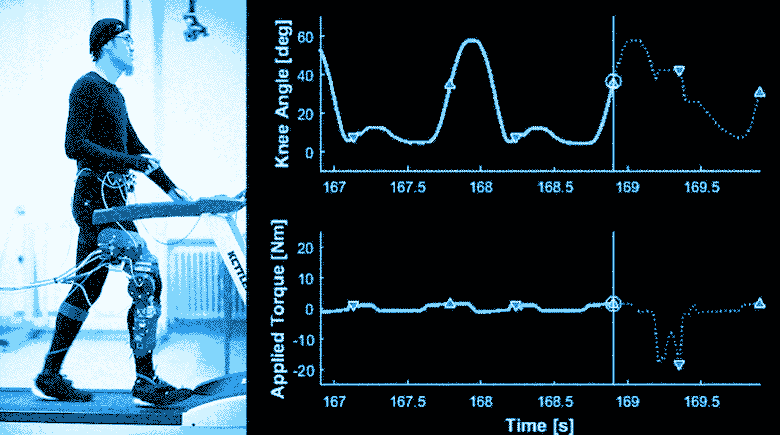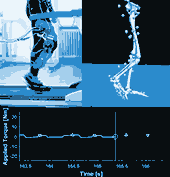
The human knee joint displays a wide range of mechanical behaviors, enabling efficient and robust locomotion under varying conditions. With the rise of active and semi-active knee assistive devices (e.g., prostheses and orthoses), there is a need to quantify the intact joint’s mechanical properties under neural control to develop optimal control strategies. This quantification is achieved through perturbation-based experimental methods, which require the development of specialized tools. However, delivering readily identifiable input stimuli and measuring with high precision, while minimally influencing the unperturbed background movement, is technically challenging.
Here, we present the development of the ETH Knee Perturbator: a tool for dynamically perturbing the knee during gait. An actuated, wearable exoskeleton was developed to apply position perturbations to the joint while measuring the interaction torque. A set of bench-top experiments was used to characterize the performance of the device, including perturbation speeds of up to 250o/s and perturbation torques over 40Nm. We show that it identifies known passive loads with 15% accuracy. Lastly, we show that the device is well-tolerated by subjects during an experiment with unexpected perturbations. We present the ability of the device to produce consistently timed (within 3% of swing phase) and reproducible step perturbations on three unimpaired subjects. It is concluded that the ETH Knee Perturbator will be a useful tool for quantifying the neuromechanical response of the human knee during gait.

